.
What are the criteria for selection of end driven, belt driven, self-driven, vertical balancing machines?
The selection of a balancing machine depends on the characteristics of the components, balancing requirements, and precision levels. Here's a breakdown of machine types and their ideal use cases:
Vertical Balancing Machines
Best for small, disk-shaped components.
Suitable for pulleys, flywheels, and similar parts.
Equipped with built-in correction equipment.
Explore Vertical Balancing Machines: Learn More
Horizontal Balancing Machines
Ideal for components requiring heavy load balancing, such as rotors and fans.
Provides stability for larger or heavier parts. Explore Horizontal Balancing Machines: Learn More
Mil Balancing Machines
Designed for shaft-like components that require precise balancing. Explore Mil Balancing Machines: Learn More
Cardan Shaft Balancing Machine
Best suited for components that rely on high-speed shaft-driven systems. Explore Cardan Shaft Balancing Machines: Learn More
CNC Balancing Machine
Offers automation for repetitive or high-precision balancing tasks.
Reduces setup time and operator intervention. Explore CNC Balancing Machines: Learn More
Optional Balancing Machines
Tailored machines for unique balancing needs or custom corrections. Explore Optional Balancing Machines: Learn More
Turbo Balancing Machines
Specially designed for turbocharger rotors.
Handles high-speed and high-precision balancing requirements. Explore Turbo Balancing Machines: Learn More
FlowBench Machine
Focuses on air or fluid flow systems requiring balanced components. Explore FlowBench Machines: Learn More
Portable Wastegate Controller Test Unit
Compact unit for testing and balancing wastegate controllers. Explore Portable Test Units: Learn More
